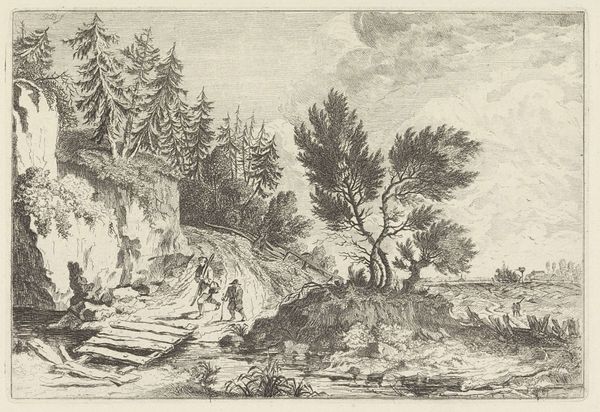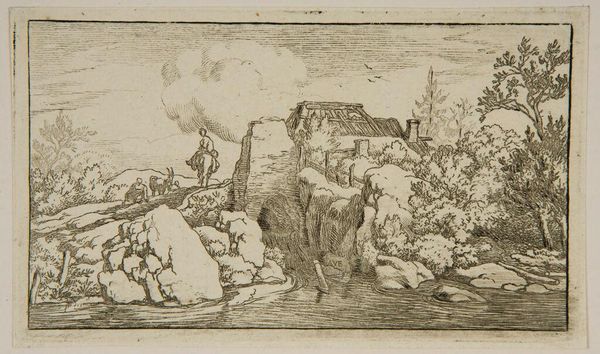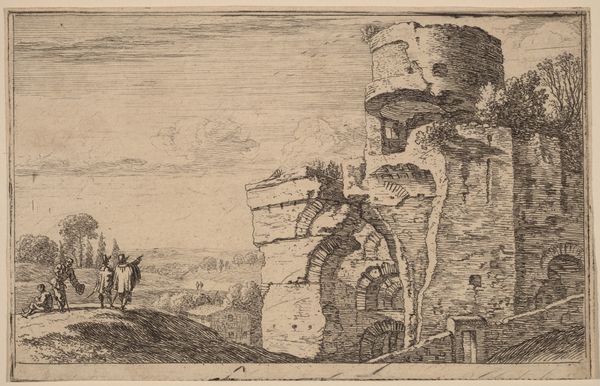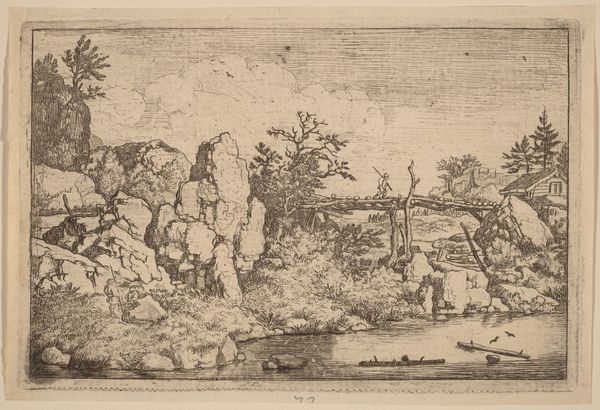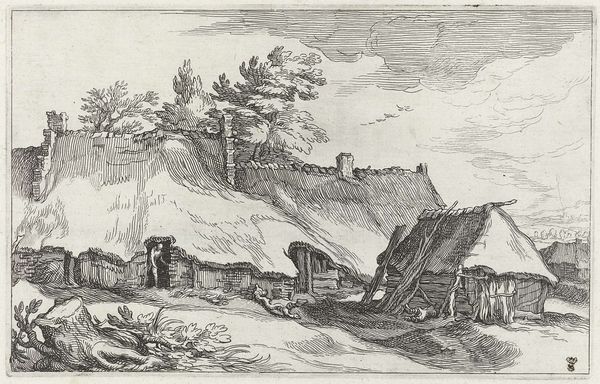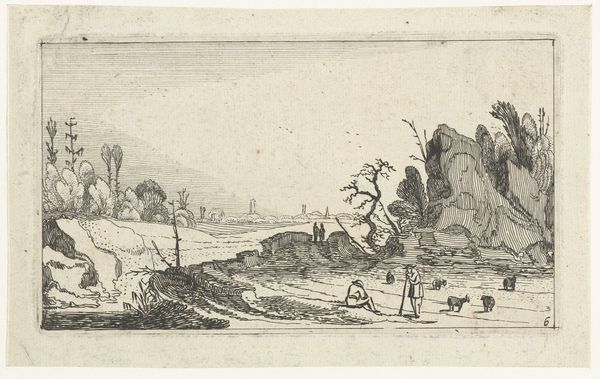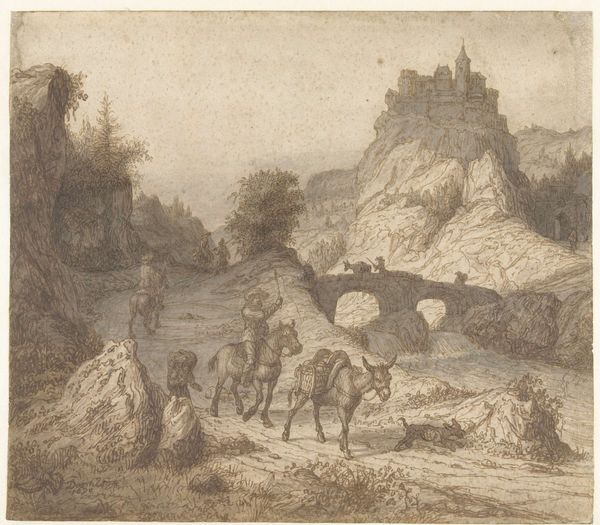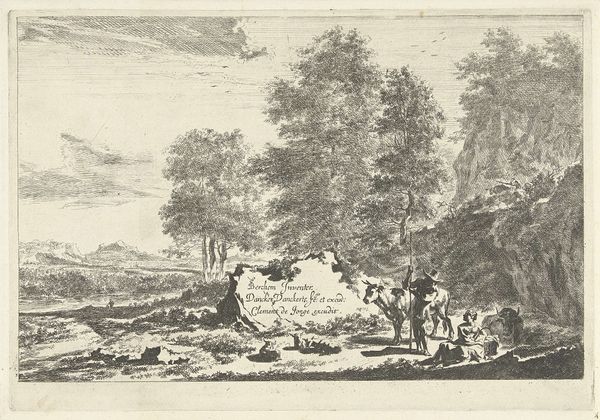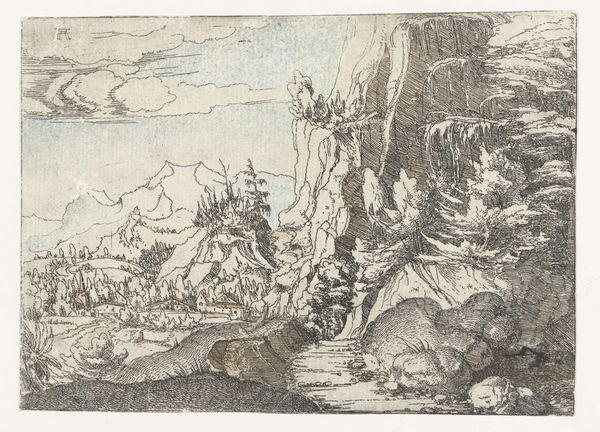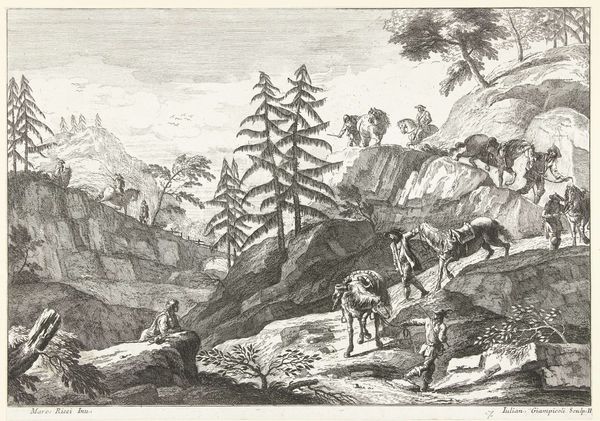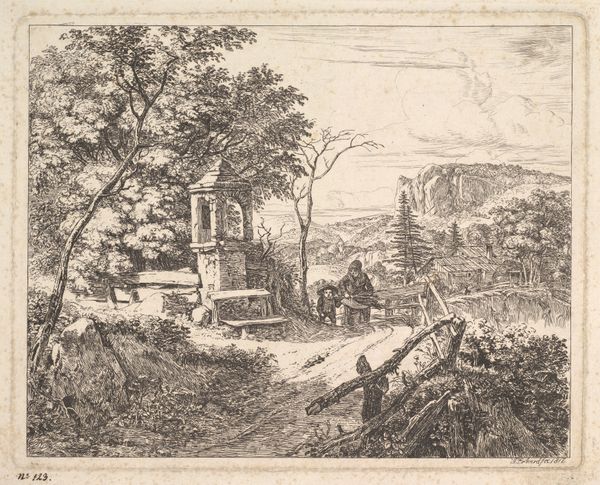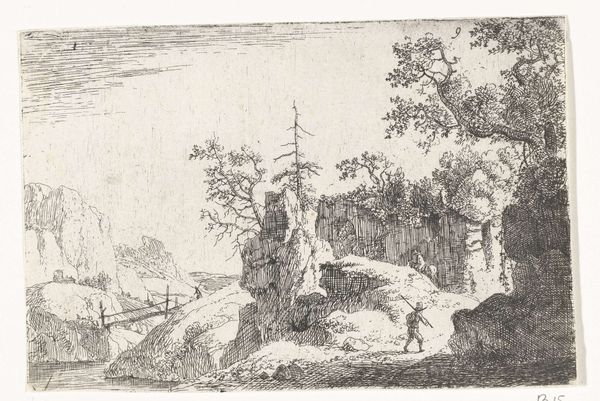
drawing, print, etching
#
drawing
#
baroque
#
dutch-golden-age
# print
#
etching
#
landscape
#
figuration
#
horse
#
genre-painting
Dimensions: Plate: 2 5/8 × 4 1/2 in. (6.6 × 11.5 cm) Sheet: 2 7/8 × 4 3/4 in. (7.3 × 12 cm)
Copyright: Public Domain
Curator: This is Allart van Everdingen's "The Horseman on the Stone Bridge," dating from sometime between 1621 and 1675. It’s an etching, currently housed in the Metropolitan Museum of Art. Editor: This is quite a detailed landscape! It feels a little precarious with the bridge in disrepair. The textures created by the etching process are interesting. How do you approach a work like this? Curator: Well, the materiality of this etching is key. Consider the social context of printmaking in the Dutch Golden Age. These weren’t unique art objects in the way we think of paintings today. This was reproducible and was relatively cheap for consumption. What do you think that affordability signifies? Editor: So, owning art like this etching made it more accessible to people of different economic backgrounds during this era. Curator: Precisely. Instead of focusing on the grandeur of the scene, think about the labour involved. Etching requires a specific set of skills and access to tools, acids, and metal plates. The level of skill and craftsmanship required, made the reproduction of similar scenes or images cheaper over time. Editor: That makes me appreciate the artist's technique much more. Considering its place in society, how it circulated changes the work! Curator: Absolutely. It moves us beyond the individual artistic genius to an appreciation of art's role in a wider economic system of production and circulation. Editor: I hadn't considered the economics and consumption side of art from that period. Thanks, I've learned a lot about art's reach at this time. Curator: And I've enjoyed considering Everdingen’s place in that network!
Comments
No comments
Be the first to comment and join the conversation on the ultimate creative platform.
